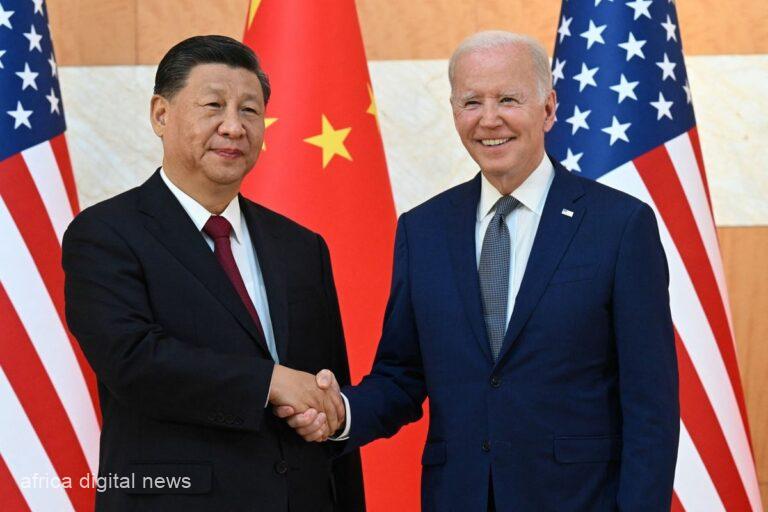The Chinese balloon spotted in the open sky of the United States last week has taken the pre-existing diplomatic ruckus between the two superpowers to a dodgy height. While China said it was a civilian weather research ‘airship’ that has strayed into US airspace, the US rejected that out of hand, saying, it was a spy balloon used by China ‘in an attempt to surveil strategic sites in the continental United States’.
Despite China’s diplomatic tone that the object did not constitute a physical and security threat, the US waited till Saturday the February 5, to shoot down the balloon out of the sky into the ocean.
So while the analysis is being awaited on what would be left of the debris, it is important to examine the anger and suspicion the balloon has thrown up amid the already strained relationship between the two. Just like any other matter in the US, the balloon saga has become a serious political issue among the Democrats and the Republicans. Both will definitely exploit it for electoral gains.
Also, as far as the US is concerned, it was its airspace that was violated, and therefore an affront to its sovereignty. This is why the balloon will open up another phase in the relationship between the two countries.
Read Also: Debt-Trap: Is Africa Trading Off It’s Sovereignty To China?
Though this is not the first time Chinese balloon has been discovered in the US sky, it is the first time it would bring diplomatic row into television screens real time. According to Pentagon officials, China sent three balloons over US territory during the Trump administration, without a military response, although those earlier flights did not seem to have traversed nearly so much US territory. But the balloon is already testing each other’s mettles and responses. As the balloon issue was going on, another Chinese balloon was spotted in Latin America over Colombia and Costa Rica. To say the second balloon also swayed would be a difficult reason to accept by the Americans.
But on the whole, the first major severe setback was the abrupt cancellation of the proposed Beijing trip of the Secretary of State Antony Blinken on Friday. According to Julian Borger in The Guardian, the balloon incident could be ‘a deliberate attempt to sabotage any tension-soothing the Blinken trip might have achieved’. Views are divided over whether Blinken should have flown to Beijing regardless while others said he was right to postpone, as the balloon saga would have overshadowed bilateral agenda.
But the anticipated Republican House Speaker, Kevin McCarthy’s visit to Taiwan, if it goes ahead, would trigger another imbroglio. The aftermath of the former Speaker, Nancy Pelosi’s visit in August 2022 was not palatable for the trio’s geopolitics, Taiwan Strait and it shows America’s incoherent strategy. Response that emanates from the outcome of the wreckage will surely guide Chinese strategy in its engagement with the US on sensitive areas like Taiwan.
On China’s side, it has responded to the use of force by accusing US of ‘clear overreaction and a serious violation of international practices’. China says it did nothing wrong, and it has even fired the head of its meteorological agency. Nonetheless, the balloon has feasibly shown how China too is operating data gathering round the world.
Either strayed or not, the question is: how would China feel seeing its balloon flying over the sensitive stronghold of its belligerent country’? As it were, Beijing may demand the immediate return of the wreckage, just as the US unsuccessfully tried when one of its spy planes was forced to land on China’s Hainan Island in 2001. It was not until the crew and later the disassembled aircraft were returned that the ensued diplomatic crisis eased.
Unfortunately, a precious moment meant to normalise ties after the Jakarta meeting of Presidents Joe Biden and Xi Jinping last November could not take place. The desire of the two leaders to avoid conflict and reduce the heat of their rhetoric is under threat. A lot of tensions over trade, climate change, chip technology, and other salient issues need to be talked about and resolved. Last week, the US announced it would re-establish its military presence in the Philippines, all in a bid to counter China amid the Taiwan crisis.
If the recovered balloon wreckage proves to be surveillance stuff, it will further worsen the relations. The question about whether China will request for its return whatever the outcome of the investigation will draw legal and ethical issues. The rift over the future of Taiwan and the current US build up and strengthening of military ties to counter China could become worsened.
The US that has been thought to be impregnable due to its geographical location can actually be vulnerable. As Stephen Collinson (CNN) reflected on the balloon, ‘for the first time, Americans experienced a tangible symbol of the national security challenge from Beijing’. But looking closely, the US’ military expansion in the South China Sea could anger China.
In all of this, the good story about the two is that they are always willing to talk whenever conflict arises. Since the recent rift has swollen out for everyone to see for whatever reason, it is not in the best interest of the world for the two economies to tangle.
Already, the world is suffering from the Russia-Ukraine war. Because of their respective spheres of influence, the world relies on the US and China to restore regular contacts and establish diplomatic norms. Diplomatic tone rather than a belligerent substance should basically dictate what follows the shot balloon.
In conclusion, as one can see, the balloon story seems to be indicating that US-China relations will get worse before it gets better. For it to get better, good lines of communication should be kept open for the world’s two biggest economies to engage.










